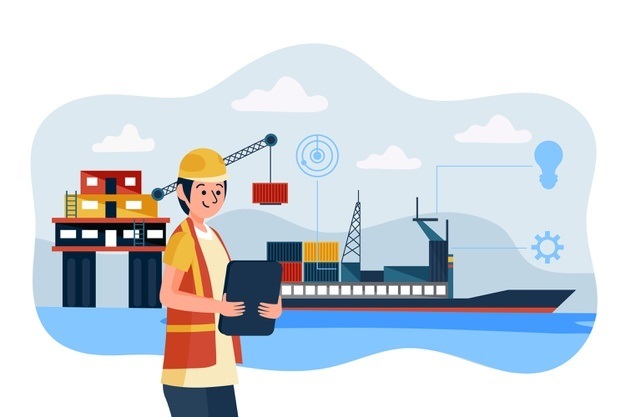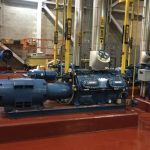The pressure in the evaporator is a measure of the evaporator temperature according to the gas laws. The vapor absorbs heat from the evaporator and its pressure rises at a constant temperature, as the phase change is taking place here without any superheating. When the evaporator pressure or L.P falls to the pressure of the gas at that particular set temperature, the compressor cuts-out and system is at set-point. When the pressure in the evaporator increases, the compressor cuts in and starts the cycle.
Compressor stages are set at to cut-in at different L.P pressures. If a particular temperature cannot be achieved by a particular no of stages, the L.P pressure increases and at the cutting in point the next stage cuts in.
Vegetable room at 4 Degrees and Meat room at -18 ??? Same compressor??? :O
This is achieved by using back pressure valves in the individual lines from each of these spaces. L.P in each of the evaporator is controlled by this back pressure valve, and thus controls the temperature. Each of the back-pressure valve maintains a particular pressure inside the system, and thus ensures a particular temperature in the system. So, L.P of vegetable room will have a higher values than L.P of meat room. Each of the evaporator is having its own expansion valves.
Thermo static Expansion valves
These are flow control devices used in refrigeration systems. The degree of superheat of vapour after the evaporator to the compressor suction side is maintained by the There is an orifice as the main part of the valve, which will open and close based upon demand of the evaporator. This is NOT the device which maintains pressure gradient in the system , and it is the compressor which is doing so.
How does TEV control degree of superheat?? Why vapour is superheated ???
A saturated vapour is always appreciated inside the evaporator coils as heat transfer is most efficient during phase change. When superheating happens, lesser amount of energy is absorbed and thus is inefficient. Even though superheating is unfavourable, we always keep a small degree of superheat for the vapour coming into the compressor suction side. This is done in order to avoid entry of any liquid into the compressor, as it may badly affect it.
TEV’s sensing bulb is placed near to the compressor suction where vapour is present in the superheated form inside the L.P tube. The vapour inside evaporator is now superheated and the feeler bulb has saturated vapour inside it. Saturated vapour pressure is always greater than superheated vapour pressure at the same temperature. This pressure difference is directly related to the degree of superheat. Thus TEV operates on this pressure difference as input, and not the pressure inside the feeler bulb as input. When degree of superheat falls below a value, this pressure gradient lowers, and TEV remains closed for a longer period, lowering flow of refrigerant liquid into evaporator coils, and pulls up the degree of superheat.
In large installations an equalizing line is given to balance the feeler bulb pressure in the TEV. This is in order to compensate for the pressure loss in evaporator coils due to friction of the coils. This pressure loss will create an increase in degree of superheat making the liquid refrigerant vaporizing completely before the end of evaporator coils. The effect is nullified by using a equalizer line.


